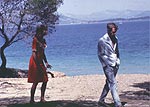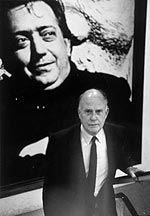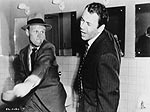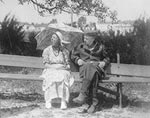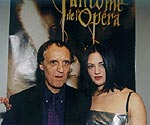For less than a large popcorn at a neighborhood Cineplex, cinephiles and casual moviegoers can enjoy cinema history while sitting in chairs once occupied by film legends Truffaut and Godard. With almost 100 screenings per month in two auditoriums — one at the Palais de Chaillot and the other on the Grands Boulevards, Paris’ Cinémathèque is the place to see rare movies and classics.
The now venerable institution has gone through several relocations, war and fire, always to re-open. The founders of the Cinémathèque were men with a “reel” passion for collecting old movies — sometimes buying them by the kilo on flea markets. Henri Langlois and George Franju (who later directed the chilling Eyes without a Face) created a Cinema Club on the Champs-Elysées to screen old silent pictures. Later film theorist Jean Mitry joined them in 1936 to create the Cinémathèque. After World War II students and film fans came to the Cinémathèque to see ’20s Scandinavian classics and American movies they had been deprived of during the German Occupation.
Today, the Cinémathèque screens films from its collection of over 35,000 reels while its younger sister, the Cinémathèque de la Danse, created in 1982, offers a unique collection of 500 films and 5,000 videos on all aspects of dance from musicals to rare takes on Josephine Baker and documentaries on contemporary choreographers such as Pina Bausch. On Sept 24 there will be a tribute to British filmmaker Rodney Wilson. where BBC-produced dance films are to be screened.
In addition to programing rare films, preservation is the Cinémathèque’s second major task. Nitrate, the main component of film up until the beginning of the 1950s, can decompose and burst into flames unpredictably, thus starting destructive fires. Unique prints were lost this way, never to be seen again. An estimated 80% of the films produced from 1890 to 1915 are now lost! The Cinémathèque’s film collection is now kept outside Paris at the Fort de Saint-Cyr and is stored in optimal conditions of humidity and temperature.
Now — with its freshly appointed Director General, Peter Scarlet — the Cinémathèque is making plans to move to the former American Center built by Frank O. Gehry (who designed the wacky Guggenheim Museum in Bilbao). Opening in 2003, and located at 51 rue de Bercy, this new film center will gather together the Cinémathèque, the recently closed Film Museum and the Film Library. (See Scarlet sidebar)
September Cinémathèque highlights
Chaillot auditorium:Sept 5-9 Les grands scénaristes: Paul Gégauff including Eric Rohmer’s Le Signe du lion Sept 5 at 7pm and Claude Chabrol’s Que la bête meure Sept 7 at 7pm / Sept 12-28 Rétrospective Boris Barnet including La jeune fille au carton à chapeau (The Girl with the Hat Box, 1927) on Sept 14 at 9pm and Au bord de la mer bleue (By the Bluest of Seas, 1935) on Sept 16 at 7pm / Sept 29 & 30: Week-end cinéma et anarchie — Séries L’Art du court-métrage weekly at 4:30pm, including letters and numbers on Sept 1 with The Alphabet (David Lynch, 1968) and H is for House by Peter Greenaway as well as childhood memories on Sept 8, with Pale Face by Buster Keaton and Jean Vigo’s Zéro de Conduite.
Grands Boulevards auditorium: Sept 5-9 “The cinema of dictators” including La Couronne de fer by Alessandro Blasetti (1940-41) on Sept 8 at 7pm / Sept 12 to Oct 14: Rétrospective Sam Fuller including Le Port de la drogue (Pick-up on South Street, 1953) on Sept 15 at 7pm and Quarante tueurs (Fourty Guns, 1957) on Sept 22 at 5pm.
Info on programs: 01 56 26 01 01. Palais de Chaillot — 7 rue Albert de Mun, 16e, M° Iéna/Trocadéro. Grands Boulevards — 42 bd Bonne Nouvelle, 10e, M° Bonne nouvelle., www.cinemathequefrancaise.com, 31F/20F (members)


